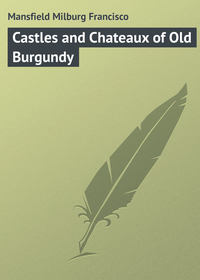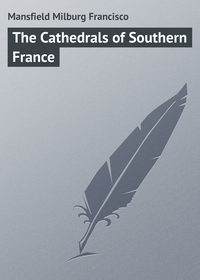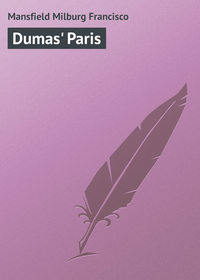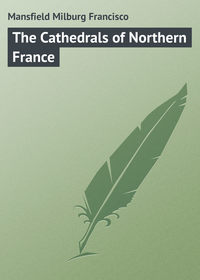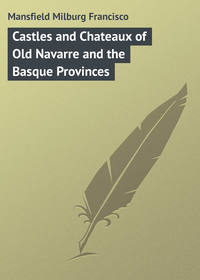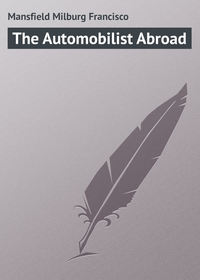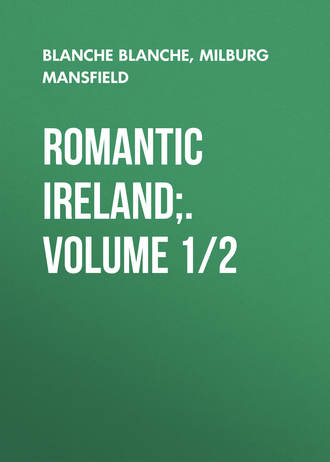 полная версия
полная версияRomantic Ireland;. Volume 1/2

M.F and B. McM. Mansfield
Romantic Ireland
CHAPTER I.
INTRODUCTORY
IN times past books of travel were frequently written for the perusal of “a few intimate friends.” Such was the purpose of a little pamphlet entitled “A Trip to Ireland,” which a few years ago fell into the hands of the writer. Its author and place of publication are unknown, but it bore the date of 1836.
The writer of this book has not the excuse of this unknown author and admirer of Ireland’s sylvan, historical, and romantic beauties for compiling the present work, nor is he possessed of the belief that he is called upon to attempt the task of merely imparting knowledge to the untravelled. But, since his attention was thus first directed to Ireland, – with the result that he has made a more or less intimate acquaintance with the allurements and charms of this delectable, if impoverished, land, – he has come to believe that there are a large number of interested people who would be glad to have an attractive presentation of some of the sights, scenes, and incidents which come to those who are fortunate enough to be able to sojourn there for a time.
In other words, this book is a record of, and some impressions of, a few of those ever-present charms of the green isle which have so permeated its history, its romance, and its literature.
As a record of a pilgrimage, this book will doubtless appear less satisfactory than as a presentation of facts relative to both the storied past and present-day affairs of the country, though it deals not so much with political issues and economic aspects as it does with the more pleasing and more tangible features of historic sites and scenes.
It is not expected that this book will escape criticism; probably it will not. It is impossible to attempt to compress a history of Ireland, a monograph on its ancient civilization, a treatise on manners and customs, or even an account of its architectural remains, at all consistent with the deserts of the subject, within the confines of a work such as this.
All that is claimed is that it is a résumé of the facts and the romance which, garnered from various sources, have impressed themselves upon the minds of the collaborators of this book in their journeyings through Erin’s Isle.
It is hoped, however, that these chapters, or, perhaps, more assuredly, the pictures with which they are adorned, will awaken a curiosity on the part of some to know more of Britain’s sister-isle.
Unfortunately, to many travellers – and to most American travellers – Ireland is a mere name, with a handle at either end, Queenstown in the south, and Londonderry or Moville in the north, where ships stop, in the dead of night, to land or embark the mails.
Usually, travellers from the Western world are in too much of a hurry to partake of the delights of London or the “dainty prettiness” of the Thames valley, the sanctity of the cathedral precincts of Canterbury or Salisbury, or even the more alluring attractions which lie “across Channel,” to think for a moment of disembarking at Cork harbour, with the mails, on board a rather uncomfortable “tender,” and, usually, amid much discomfort of weather.
Once the opportunity is missed, they are unlikely to retrace their steps in that direction, since one’s enthusiasm or desire pales before charms and attractions then present.
It ought to be a part of every traveller’s experience for him to pay a visit to Ireland – the “Emerald Isle,” or “Romantic Ireland” – and judge of its attractions, the places and the people, as seen on their native soil.
With a warm heart she will welcome him; with lip-liveliness and sparkling language she will entertain him; with impulsive zeal she will conduct him over her diversified domain, and bring under his eye scenes where —
“Grace and Terror smiling standLike sisters hand in hand.”Though less fastidious than England, and without the canny cautiousness of Scotland, yet, of the Three Graces of the United Kingdom, fair Erin, for natural gifts and spontaneous beauties, stands preëminent.
“To the Bretons, the Basques, and the Irish,” says an observant French writer, “races not dissimilar in their hidden habits of thought and in the vague sadness of their eyes, the Atlantic Ocean is a boundary for the mind… It is their climate background, resting-place, and grave … the green hills into which Europe breaks to meet the southwest wind.”
All this, and more, is the Atlantic to the whole of northwest Europe, – Ireland in particular, – and its influences are not only great, but far-reaching.
The Irish, they say, have never been great seafarers. This, it is feared, is true to no small extent. They are not even great fishermen, as they well might be in their sea-girt isle. The Irishman himself will tell you that it is because the thrifty and hardworking west-coast Scotch have usurped their market. This may be so to a certain degree; but, to a still greater degree, their lack of capital to properly equip the industry is the reason why the harvest of the sea is garnered under their very sight.
It is not given to all who would travel and muse en route to be able to express their thoughts with that beauty of language which graces the lines of Stevenson or of Sterne. One may not even have the temerity to attempt to imitate their style.
He may, however, – and with propriety, thinks the writer, – consider, if he will, that theirs was the view-point of the acute observer and lover of the beautiful, and, as near as may be, imbibe somewhat of the emotions and sentiments with which these masters beheld the spots covered by their wanderings. Their words have come down to us as a variety of topographical description which can only be recognized as a new and precious thing, compared to the descriptions before and since.
With such an end in view were the various wanderings which are set forth in these pages undertaken. Not consecutively, nor even methodically, was the route laid out, but in the end it covered practically the entire island at varying seasons and under equally varying conditions of comfort or discomfort, though no hardships or disagreeable experiences were encountered, and it is confidently asserted that nothing of the kind would be met with by any who might make the journeys under similar conditions.
“June the nineteenth, arrived at Holyhead after an instructive journey through a part of England. Found the packet, the Claremont, Captain Taylor, would sail very soon.
“After a tedious passage of two and twenty hours, landed on the twentieth, in the morning, at Dunleary (now Kingstown), four miles from Dublin, a city which much exceeded my expectation.”
Thus wrote Arthur Young in his simple and quaint phraseology in 1776.
Arthur Young was a great traveller, one might say an inveterate traveller. He observed and wrote mostly of matters agricultural, but his side-lights thrown upon the screen – if not exactly illuminating it to a marked degree – were of far more interest and value to the general reader or travel-lover than the dicta of pedants or the conjectures of antiquarians.
Arthur Young was an agriculturist, an economist, or whatever you like to think him; but he evidently could not repress the temptation to put the results of his observations into print, as the many scores of entries to his credit in the history of book-making and authorship will show.
He sought to chronicle his “Tour in Ireland” for posterity, and conceived the thought of publishing the work “by subscription.” This he did in the year 1780 – and a most unlovely specimen of book-making it was. It was foredoomed to failure, and it apparently met it forthwith; for the author states in his preface that he was only able to complete the work at great expense to himself.
No further criticism shall be made. It remains now but to praise. The book is a veritable mine of fact – with precious little fancy – of the farming, fishing, weaving, and allied interests of the Ireland of that day, with not a little detail concerning the history, romance, and plain matter-of-fact social and economic conditions of life.
To-day, conditions for all but the well-to-do classes have changed but little, and here is a splendid framework to suggest a line of thought as far different from that conveyed by the “impressions” of one travelling for mere pleasure, as it is from the cut-and-dried bits of scrappy information which fill the guide-books to-day.
Until the indefatigable German comes to the rescue, it may be ventured that we shall have no comprehensive, concise, and correct guide-book to Ireland, and will have to take our pickings where we find them.
This book attempts merely the task of compiling fact and fancy, drawn from many sources, in connection with current comment – based upon actual observations.
There is much contributory and allied matter to be found in the wealth of illustration “done by the artist on the spot,” which, like the letter-press, professes truthfulness and attractiveness in its presentation.
Such economic questions as are dealt with herein are those only which would be observed by all, no matter how rapid their passage; and references to political questions have only been made when they bear some relation to historical events of a past long gone by.
The controversial side of the religious question is omitted, though, considering the many noble monuments, ancient shrines, ruined abbeys, and existing church edifices throughout the land, references to it, and many of its acts and functions, were here and there necessary.
So, too, mention has been made of many of the romantic and eery legends of the country, many of which are, in the light of recent history, considered somewhat apocryphal as to their genuineness. But, reader, what would you? You surely would not go to Ravenna and not see Juliet’s tomb, even though you know that Juliet had no real identity. Neither would you go to that gay little city of mid-France, Nevers, without visiting the tomb of “all the Montmorencies,” nor to Warwickshire without going to Stratford. Hence you must, if you would know aught of Ireland, see Muckross Abbey, Blarney Castle, and the Giant’s Causeway. The harps, the shamrocks, the blackthorns, and the peat-bogs, all of which are genuine enough, will then fit themselves accommodatingly into the ensemble, and you will have a picture so impressed upon the memory that the recollection of it will rival most things of this earth with which one has had but a passing intimacy.
This work, then, may in some small measure give a more favourable impression of the country than has commonly been produced even by Ireland’s pseudo-humourous novelists – that it is simply a land where mud huts, misery, discord, and violence predominate – by recognizing it as a land blessed by Heaven, in the first instance, at any rate, with nearly every natural gift.
If there be no end to the making of books, there should at least be a suitable and preconceived ending to all so made; and herein lies the difficulty for most writers.
The popular fictionist seems under the impression that the public want close upon a couple of hundred thousand words, filling a plump, ungraceful volume, for their few modest pennies; the compiler of books of pedantic information pads his product into a stately quarto, and the guide-book maker descends to small type and badly designed pages and crowds as much as he can into a small pocketable volume.
From these species of printed things ramify many varieties, and the author of this work has many times been placed in a quandary as to what mammoth proportions it might not assume were he to allow his predilections to run riot through its pages.
It is easy to say with Sterne, “Let us write a duodecimo,” but with what measure may an enthusiastic or just admiration be limited as to the overflowing volume of appreciation?
Mere cubic capacity as to size of the volume, or the superficial area of its pages, will not serve. The arts of the publisher and his printer can nullify any preconceived plans of this nature.
A judicious selection of the material to be used would be much more likely to bring about the desired result, though again we are confronted by the moving question as to how elaborate or extensive a work is necessary in order to cover the ground as minutely or as broadly as might be desired.
The result will not be found to approach the completeness of an historical record, nor yet the flimsiness of a mere sentimental journey along well-worn roads. It fills, rather, the gap which lies between, in view of the greater interest which is daily being shown in all things relating to Ireland – its literature, its history, its architecture, and its arts. Hence to a considerable public, which, it may be presumed, will ultimately show an interest therein, it is offered as an appreciation of the Ireland of the past and the present, based upon something more than a personally conducted tour to Killarney, or a jaunting-car ride about Queenstown, while awaiting the departure of the Atlantic mail-boat.
CHAPTER II.
A TRAVEL CHAPTER
THE true peripatetic philosopher is the only genuine traveller, and the vagabond and the pilgrim are but varieties of the species. The “personally conducted,” alone or in droves, have no realization of the unquestionable authority by which nature “sets up her boundaries and fences; and so circumscribes the discontent of man,” to borrow the words of Sterne.
The individual who merely wants to “get there” in the shortest possible time, and by the most direct road, knows not the joys of travel, nor ever will.
The moods of the traveller are likewise a varied thing; circumstances never alter cases more than when met with unexpectedly by him who travels for business or pleasure.
With Ireland the above singularly applies.
Similar conditions must exist in order for one to see it in just the same phase.
The Liffey, which flows through Dublin’s streets, may be dirty, picturesque, or beautiful according to whether you view it on one part or another.
Blarney Castle does not look as if it were made to kiss, and so some are disappointed therein.
Cork harbour is one of the most charming landlocked waters one may see; but, if he views it from Queenstown heights and is pestered meanwhile by a shabby, loafing beggar for an “American nickel or dime,” the onlooker will doubtless form a mental reservation which will linger as long as the lovely memory itself.
Killarney may, or may not, come up to his preconceived ideas, and Slievemore, that majestic peak which towers sugar-loaf fashion quite two thousand feet from the water’s edge, may seem grim and bare where he would have found it forest-grown. The Giant’s Causeway, but for the recollection of its various legends, might suggest something quite different. And so the whole scheme, viewed in a pessimistic manner, leaves no such impression as otherwise would have been the case.
For him, then, who would like his way smoothed, – his travel-routes laid down and simplified, – the present chapter, it is hoped, will be found acceptable.
The approach to Ireland from England is, at best, not so very comfortable or attractive. The Holyhead mail-boats are so timed as to accomplish remarkable regularity of passage in all weathers, but, at times, with no little discomfort to passengers.
The crossing from Holyhead to Kingstown is the Pas de Calais over again; with an exaggeration of length and, if possible, of boisterousness. It lasts two and three-quarters hours, and, in any but the most temperate mood of wind and wave, would be a good test of one’s fitness for a seafaring life. The passage from Stranraer to Larne is better, being less than two hours and not all of that in the open sea; while from Milford Haven to Waterford, in the south, is some six or eight hours’ journey; and that of Holyhead to Greenore, or Liverpool to Belfast, is worse in every particular. On the whole, Holyhead – Kingstown is the route which may best be followed, under normal conditions and circumstances, in reaching Ireland from England.
Anglesea Island, on which is Holyhead, is the “Lands End” of North Wales and the natural gateway for reaching Ireland, hence it is a foregone conclusion that the route should be popular. Holyhead, itself, offers little suggestion of the dense forests of druidical times. It is popularly supposed to have been devastated by the Romans, who slaughtered those pitiless hierarchs, the druids, and put an end to human sacrifice – cutting down with sharp axes the sacred shady groves which once dotted the island.
As the South Stack is left behind, – that beacon-light by which passes all of that vast sea-borne traffic to and from Liverpool via St. George’s Channel, – the mail-packet begins to find herself; and, in the course of time, wind, and tide, the greensward of Dalkey and the heights of Howth – guarding Dublin Bay on the north and south – come into view.
It has seldom, if ever, been claimed that the shores of Ireland actually denote hospitality; in fact, it is doubtful if this be true of any land north of tropic climes.
Dublin has not an ideal situation for a touring centre, in fact, it is not central at all; but it is the best that offers, and is the gateway through which by far the majority of travellers make their entrance.
Four great topographical divisions lie north, south, and west of this gateway, and arrange themselves naturally enough along the boundary-lines of the ancient political divisions of Leinster, Munster, Ulster, and Connaught, which have descended in historical lore and association from the Irish kings.
Each of these topographical divisions forms a centre of itself, and each is equally accessible from Dublin.
In popular sentiment, the south, perhaps, stands at the head, with Connemara and the western highlands next, and lastly the colder north. The entire island is but three hundred miles in length by one hundred and eighty miles in width. Naturally such a circumscribed area offers but little difficulty for modern means of transport, and, did one but have the time and inclination, it would be hard to find a more entrancing journey on foot than to walk around the island along its wonderfully picturesque coast roads.
This procedure will doubtless not be practicable to every one; but he who is able to do so is strongly recommended to so accomplish a portion of the round, if only that small portion which lies between Bantry and Killarney or Clifden, in Connemara and Sligo.
If he would not tramp, he can find “car” accommodation in summer; or he may make the journey with much pleasure by means of his bicycle, or, more progressively, by motor-car. In any event, he will then see and realize to the full some of the things that the average person sees only in pictures, and reads of only in books.
It is a question as to how far the casual traveller likes to be left to his own resources to discover new or latent beauties of landscape or environment; but, while the spirit of adventure need not necessarily be great in one’s soul, it is unquestionably with somewhat of the feeling that the old explorers must have had that one comes suddenly upon a vista miles and miles in extent, with perhaps not a sign of human habitation or of human life in any form to be noted in any direction.
There may be other populous countries of Europe where this is equally possible, as well as Ireland, but assuredly not more so.
There is in the two localities before mentioned, and in the Donegal Highlands, an isolation as primitive and unworldly as the mind of man, used to the civilization of cities, can possibly conceive; and, yet, all is within a couple of hours’ ride by rail of centres of population which, if not entitled to be classed as great cities, are resplendent with electric-lights and under the spell of motor-cars and electric lines.
The railway routes, generally speaking, also readily lend themselves to this arrangement of the topographical divisions into the south, the north, and the west. Thus one may go to Cork either via Mallow, the junction for Killarney, or via the easterly coast through the “Garden of Wicklow,” Wexford, Waterford, and Youghal.
Until Cork is reached, the tourist journeys rapidly or slowly, as the places en route may or may not have an appealing interest for him; but, once Cork, or Mallow, is reached, he is put to it to decide his future movements with something of the precision of a time-table, depending on whether he has much or little of the well-recognized commodity of time at his disposal.
To know and appreciate the full charm of that jagged corner of southwest Ireland which lies between Cork harbour – whence so many sunny-spirited Hibernians have migrated to America during the last fifty years – and Tralee, in County Kerry, one should journey around the coast by steamer.
One week, not less, should without question be devoted to Killarney and about there, if one would enjoy it to the full, though the week can perhaps be made to include the tour between Dublin and Limerick, as well as the coach trip from Bantry Bay to Killarney via Glengarriff. Another week – it can hardly be accomplished in less time – should be passed between Limerick and Sligo, including Galway, Connemara, Achill, – that lone peak rising from the sea, – and such of the western highlands, in general, as it may be possible to cover in this time. A final week, all too short, may be given to the Donegal Highlands, the Giant’s Causeway, and around the coast to Belfast, whence one completes the round by returning to Dublin, or crossing to England by way of Greenore to Holyhead, Belfast to Liverpool, or Larne to Stranraer.
Such, in brief, is the general outline of the methods which will enable the traveller to make the round with the most economical expenditure of time and money. In the height of the season, July and August, – one should not, however, go anywhere in “the height of the season,” – there are charming variations of travel by lake or river, or coasting trips by steamer around the greater part of the island, which lend not only variety, but offer to some a more pleasant method than even travel by land.
The longest, and by far the best appointed, of these communications by inland waterways is a stretch of something over a hundred miles of the noble river Shannon, – “Our own romantic stream, green Erin’s lovely river,” – which, in conjunction with a series of beautiful lakes, extends from Killaloe, in the south (near Limerick), to Dromod, in the north (near Sligo). During the summer the journey is made in comfortable and well-appointed steamers, and throughout is intensely interesting and full of variety. About Killaloe the views are very fine. The mountains of Clare and of Tipperary shadow the town on either side, and away to the north for three and twenty miles stretches Lough Derg, crowded with islands and lined, one might almost say, on both shores by ruined castles. From Portumna, at the head of Lough Derg, and Banagher are the rich meadow-lands of Galway, along which the river winds tranquilly, passing hundreds of beautiful islets, its banks green with rich, low-lying pasture-lands. A few miles from Shannon Bridge is Clonmacnoise, over which hang many memories of learning, of wars, and of worship. Above Athlone the waters of Lough Ree are entered, with its rocky shores full of indentations and its myriads of sparkling islands – one of the loveliest prospects to be seen in Ireland, rivalling even Killarney itself.
The actual expense of travel in Ireland is little. How could it be? The distances are not great, and the cross-channel absurdly short, as sea-voyages go. One may, of course, spend “anything he likes,” as the man in the streets puts it, and get no more for it than another who disburses half as much.
The trip has, by some, been accounted an expensive one; but assuredly such is not the case. Hence it is to be hoped that this practical chapter, as the writer is pleased to think it deserves to be called, may make possible to some that which was heretofore thought to be impossible or, at least, impracticable.
What the real travel-lover wants, however, is, or ought to be, to partake of the life of the people, to see and know truthfully how they live, what they eat, what are their pleasures and their vocations, and how and why they so conduct themselves. One does not tour France to eat tables d’hôte served after a conventional menu du jour, which is much the same the world over, or to America or England, or to Germany or Russia to do the same thing. What he really wants, or what he would really like, did he but know how to get it, or were he possessed of sufficient unconventionality, would be to eat snails in Burgundy, bouillabaisse in Marseilles, saddle of mutton in England, baked beans and pumpkin pie in New England, and the best of beef and hog products in Ireland. This last may sound a bit strange, but it is a fact that the larger number of bullocks brought to English ports for slaughter come from Ireland, and not from the Argentine or America, as the English fiscal reformers would have us believe.




